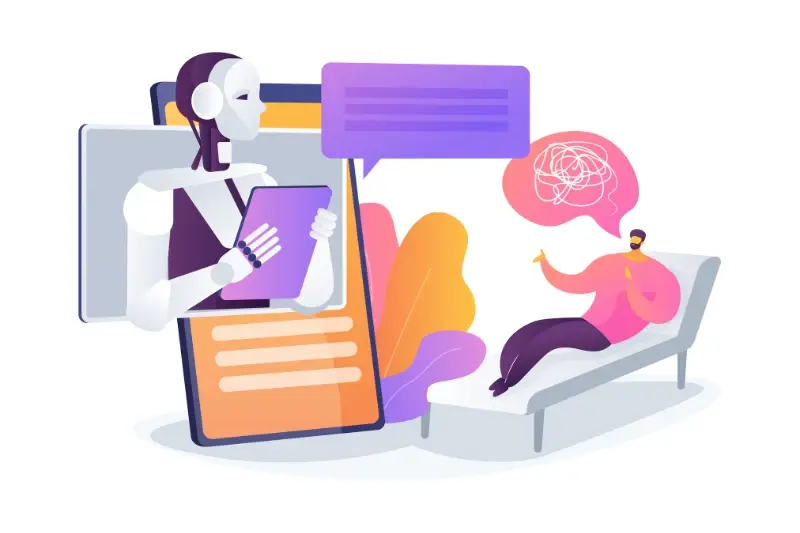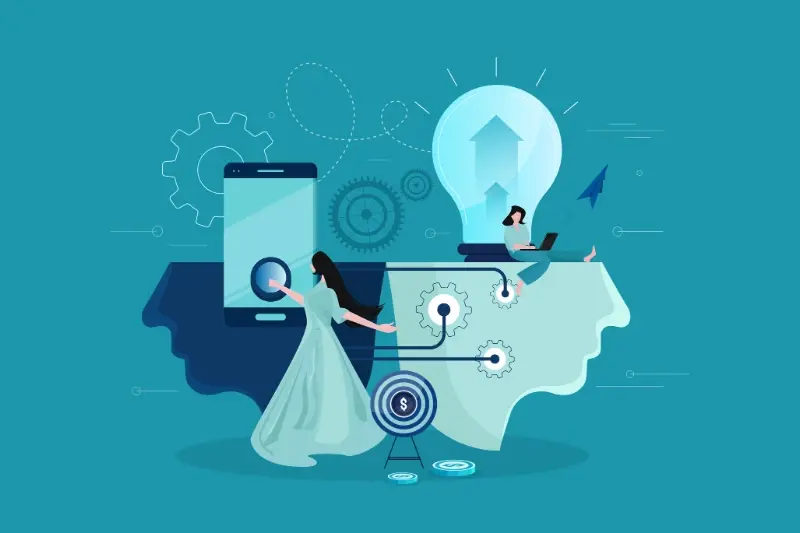Native Vs Cross Platform A Psychological Perspective
I've been working in mobile development for quite some time now, and one thing that never stops fascinating me is how differently people react to apps. You know when you pick up your phone and open an app—there's this split second where your brain makes a judgement. Is this going to work smoothly? Will it feel right? Most people don't realise it's happening, but that moment shapes everything that follows.
When we talk about native vs cross-platform development, most conversations focus on technical stuff like performance metrics and development costs. Fair enough—those things matter. But what we don't discuss nearly enough is what's happening inside users' heads when they interact with these different types of apps. The psychological side of app platforms is massive, yet it gets overlooked constantly.
The brain processes mobile interactions in milliseconds, forming impressions that can make or break user engagement before conscious thought even kicks in
This isn't just about whether an app runs fast or slow—though that's part of it. It's about how our brains are wired to expect certain things from mobile experiences, how we form emotional connections with the apps we use, and why some development choices feel 'right' whilst others make us want to delete an app immediately. Understanding this psychology can completely change how we approach mobile app development decisions.
What Happens in Your Brain When You Choose an App
Picture this: you're standing in front of your phone screen, thumb hovering over two similar apps. One loads instantly, feels smooth, responds to every tap—the other takes a moment longer, stutters slightly when you scroll. Your brain is already making judgements before you've even realised it.
The human brain processes these micro-interactions in milliseconds. We're talking about decisions that happen faster than conscious thought. When an app responds immediately to your touch, your brain releases a tiny hit of satisfaction. When it doesn't? Well, that's when frustration starts building up, even if you can't quite put your finger on why you feel annoyed.
The Split-Second Decision Process
Your brain goes through several stages when choosing between apps:
- Visual recognition—does it look trustworthy and professional?
- Speed assessment—how quickly does it respond to your first interaction?
- Familiarity check—does it behave like other apps you know and love?
- Emotional response—does it feel pleasant to use?
This whole process happens in under three seconds. That's all the time you have to make a good first impression. I've watched countless user testing sessions where people delete apps after just a few taps—not because the app was broken, but because something felt "off" about the experience. Your subconscious mind is incredibly good at spotting when something doesn't feel quite native to your device.
The Psychology Behind Native App Experiences
When someone opens a native app on their phone, something interesting happens in their brain—they feel at home. Native apps speak the same language as the operating system, which means every swipe, tap, and gesture works exactly as expected. This isn't just about technical performance; it's about meeting the psychological expectations that users have built up over years of using their devices.
I've watched countless user testing sessions where people interact with native apps, and there's a noticeable difference in their behaviour. They're more confident, more exploratory, and frankly more forgiving when things don't go perfectly. Why? Because the app feels like it belongs on their device. The buttons look right, the animations feel smooth, and the whole experience aligns with their mental model of how their phone should work.
Native development creates what psychologists call 'cognitive ease'—that comfortable feeling when everything works as your brain predicts it should. Users don't have to think about how to navigate; they just do it. This psychological comfort translates into higher engagement rates, longer session times, and better user retention. When building native apps, you're not just writing code—you're crafting an experience that feels psychologically 'correct' to users.
Users form impressions about app quality within milliseconds of opening it. Native apps have a psychological advantage because they immediately feel familiar and trustworthy to users.
How Cross-Platform Apps Affect User Perception
Here's something I've noticed after working with hundreds of clients over the years—users can sense when something feels "off" about an app, even if they can't put their finger on exactly what it is. Cross-platform apps often trigger this subconscious response because they don't quite behave like users expect them to.
When someone picks up an iPhone, their brain has already formed expectations about how apps should look and feel on that device. The same goes for Android users. Cross-platform apps sometimes break these mental rules—buttons might look slightly different, animations could feel a bit sluggish, or navigation patterns might not match what users are used to.
The Trust Factor
What's fascinating is how quickly users form judgements about app quality. Within seconds of opening an app, people make decisions about whether it feels professional or cheap. Cross-platform apps that don't nail the platform-specific details can trigger what I call the "budget app" perception—users assume less care went into development.
- Users notice when buttons don't look quite right for their device
- Slow loading times make people question app quality
- Inconsistent behaviour creates confusion and frustration
- Good cross-platform apps can fool users completely
The good news? Modern cross-platform tools have come a long way. When done well, users won't even realise they're using a cross-platform app—and that's exactly how it should be.
User Expectations and Mental Models in Mobile Development
When people pick up their phones, they already have ideas about how things should work. These mental models—basically the pictures in our heads about how apps behave—shape everything they do. If someone's used to swiping right to delete an email, they'll expect that same action everywhere else.
The tricky bit with native vs cross-platform development is that these expectations change depending on whether you're on iOS or Android. iPhone users expect buttons to look and feel a certain way; Android users have completely different ideas. I've watched users get genuinely frustrated when an app doesn't follow their platform's rules—even when they can't quite explain why something feels 'wrong'.
Building for Familiar Patterns
Cross-platform apps face a real challenge here. Do you design for iOS patterns and risk confusing Android users? Or do you create something completely custom that might feel foreign to everyone? Native apps have the advantage of speaking each platform's language fluently.
Users don't think about the technology behind an app—they just know when something feels right or wrong
The reality is that people form these mental models within seconds of opening an app. They're not thinking about whether it's built natively or cross-platform; they're just expecting it to work the way their brain thinks it should work.
The Emotional Connection Between Users and App Performance
Here's something I've noticed after years of watching people use apps—performance isn't just about speed, it's about feelings. When an app takes three seconds to load instead of one, users don't just think "this is slow." They feel frustrated, annoyed, sometimes even personally let down by the experience.
I remember working with a client who couldn't understand why their beautifully designed cross-platform app was getting poor reviews. The functionality was there, the interface looked great, but users kept complaining about it feeling "sluggish" and "unresponsive." What they didn't realise is that every tiny delay—every animation that stuttered, every button press that took a moment too long to register—was chipping away at the emotional bond between user and app.
When Performance Becomes Personal
Native apps tend to create stronger emotional connections because they feel more immediate and responsive. When you tap something and it responds instantly, your brain registers that as reliability and trustworthiness. Cross-platform apps, whilst perfectly functional, sometimes introduce those micro-delays that make users feel like the app isn't quite listening to them properly. Understanding how native mobile app performance affects user experience can be crucial for making the right development choices.
It's not rational, but emotions rarely are. Users form attachments to apps that make them feel heard and understood—and performance plays a massive role in creating that feeling of connection.
Decision-Making Psychology for Development Teams
After years of helping development teams choose between native vs cross-platform approaches, I've noticed something interesting—teams often make decisions based on fear rather than facts. The psychology behind choosing app platforms isn't just about technical specs or budget constraints; it's about how comfortable the team feels with uncertainty.
Most developers I work with have a natural bias towards what they know best. If you're an iOS specialist, you'll probably lean towards native development because it feels safer. Cross-platform feels risky, unknown. But here's what I've learned: the best mobile development decisions come from teams that can step back from their comfort zones and think about the actual user experience they want to create.
The Comfort Zone Trap
I see teams get stuck in analysis paralysis all the time—they spend weeks debating app platforms when they could be building prototypes and testing with real users. The secret? Start with your users' needs, not your technical preferences. What matters more: shipping quickly to validate your idea, or having pixel-perfect animations from day one? Understanding what separates good apps from great ones often comes down to these fundamental decisions about user experience over technical preferences.
Schedule a 30-minute "devil's advocate" session where team members argue for the opposite approach they initially preferred. You'll uncover hidden biases and make better decisions.
Conclusion
After working with countless development teams over the years, I've learnt that choosing between native and cross-platform isn't just a technical decision—it's a psychological one that affects everyone involved. Your users will notice the difference, even if they can't put their finger on why one app feels better than another. Their brains are constantly processing tiny details about speed, smoothness, and familiarity that shape their entire experience with your product.
What fascinates me most is how our mental models work. Users expect apps to behave in certain ways based on their platform, and when those expectations aren't met, it creates friction. Native apps have the advantage here because they speak the language users already know. Cross-platform apps can work brilliantly too, but they need extra attention to get those psychological details right.
The real insight? Stop thinking about this choice as purely technical. Start considering how your users' brains will respond to your app. Will it feel right? Will it create the emotional connection you want? Will your development team be confident in what they're building? These psychological factors matter just as much as performance benchmarks or development costs. When you align your technical choices with how people actually think and feel, that's when you build something truly special.
Share this
Subscribe To Our Blog
You May Also Like
These Related Stories

AI Meets Psychology: Next-Gen Mobile App Development

How to Build AI Powered Apps With Psychological Insights





